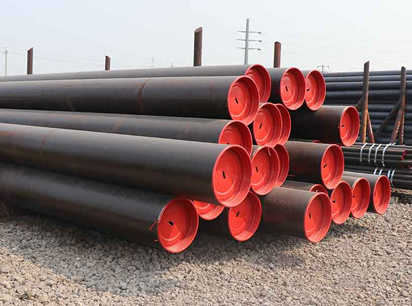Water seamless steel pipe supplier to share with you: seamless steel pipe, is the largest amount of industrial pipes, the largest variety of specifications.
Basically divided into:
There are two types of seamless steel tubes for fluid transportation and seamless steel tubes with special properties. The former is a steel pipe commonly used in process pipelines, and the latter is a steel pipe for boilers, a cracking furnace pipe, and a heat exchanger steel pipe.
Can be divided into:
Carbon seamless steel pipe, chrome molybdenum seamless steel pipe and stainless, acid-resistant seamless steel pipe.
According to the nominal pressure, it can be divided into:
Low pressure (0≤1.0MPa), medium pressure (1.0 <10MPa =, high pressure (≥10MPa)).
❶Carbon seamless steel pipe
Commonly used manufacturing materials are 10 #, 20 #, 16Mn steel.
Its specification range is: hot-rolled outer diameter φ32 ~ 630mm, cold-drawn outer diameter φ6 ~ 200mm, single tube length 4-12m, and allowable operating temperature is -40 ~ 450 ℃.
It is widely used to transport various non-corrosive media to steel, such as steam, oxygen, compressed air, oil products, and oil and gas. also known as oil line seamless steel pipe.

Oil Line Seamless Steel Pipe
❷Low alloy steel seamless steel pipe
Refers to alloy steel pipes containing a certain proportion of alloying elements.
There are usually two types:
One is a low-alloy steel pipe containing manganese, called an ordinary low-alloy steel pipe, such as 16Mn, 15MnV, etc .; the other is a low-alloy steel pipe containing chromium, molybdenum, and other elements, called a chromium-molybdenum steel pipe.
Commonly used are 12CrMo, 15CrMo, 12Cr2Mo, 1Cr5Mo, etc. The specifications range is outer diameter φ10 ~ φ273mm, the length of a single pipe is 4-12m, and the applicable temperature range of chrome molybdenum steel pipe is -40 ~ 550 ℃.
Low-alloy seamless steel pipes are mostly used to transport various high-temperature oil products, oil and gas, and less corrosive salt water, and low-concentration organic acids.
❸Stainless acid-resistant seamless steel pipe
According to the different contents of various metals such as chromium, nickel and titanium, there are many varieties, such as Cr13, 00Cr17Ni14Mo2, 1Cr18Ni12Mo2Ti, 1Cr18Ni9Ti, etc.
The most used amount of these steel grades is 1Cr18Ni9Ti, which is often expressed on the construction drawings by the simplified material code 18-8, and the applicable temperature range is -196 ~ 700 ° C.
It is used to transport various corrosive media such as nitric acid, acetic acid and urea in chemical production.
❹High pressure seamless steel pipe
Its manufacturing material is basically the same as the seamless steel pipe described above, except that the pipe wall is thicker than the medium and low pressure seamless steel pipe, and the thickest pipe wall is 40mm.
For example, the specifications of high-pressure seamless steel pipes for fertilizer equipment are φ14 × 4 (mm) ~ 273 × 40 (mm), the length of a single tube is 4-12m, the applicable pressure range is 10-32MPa, and the operating temperature is -40 ~ 400 ℃.
The above high-pressure seamless steel pipes are used in petrochemical plants to transport media such as raw gas, hydrogen nitrogen, synthesis gas, water vapor, and high-pressure condensate.
❺Low temperature steel pipe
In the cold area of the introduced project, the amount of material is STPL-39, STPL-46, and the operating temperature can reach -105 ° C.
Low temperature steel pipes are divided into seamless steel pipes and seam steel pipes. The nominal diameter of seamless low temperature steel pipes is 15 ~ 400mm, and the wall thickness is the same as that of carbon steel pipes. The nominal diameter of seam low temperature steel pipes is 400 ~ 1100mm, and the wall thickness is 6 ~ 10mm, standard length of single tube is 6m.
It is suitable for conveying various non-corrosive low-temperature medium pipes. At present, there is no domestic production of steel pipes corresponding to this standard.
